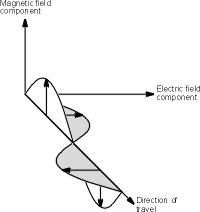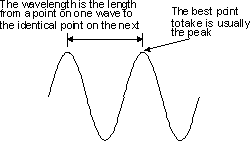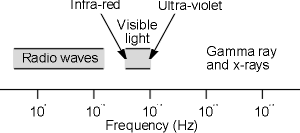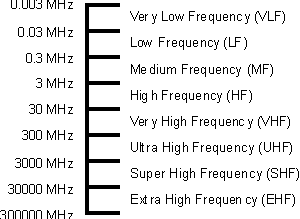Products Category
- FM Transmitter
- 0-50w 50w-1000w 2kw-10kw 10kw+
- TV Transmitter
- 0-50w 50-1kw 2kw-10kw
- FM Antenna
- TV Antenna
- Antenna Accessory
- Cable Connector Power Splitter Dummy Load
- RF Transistor
- Power Supply
- Audio Equipments
- DTV Front End Equipment
- Link System
- STL system Microwave Link system
- FM Radio
- Power Meter
- Other Products
- Special for Coronavirus
Products Tags
Fmuser Sites
- es.fmuser.net
- it.fmuser.net
- fr.fmuser.net
- de.fmuser.net
- af.fmuser.net ->Afrikaans
- sq.fmuser.net ->Albanian
- ar.fmuser.net ->Arabic
- hy.fmuser.net ->Armenian
- az.fmuser.net ->Azerbaijani
- eu.fmuser.net ->Basque
- be.fmuser.net ->Belarusian
- bg.fmuser.net ->Bulgarian
- ca.fmuser.net ->Catalan
- zh-CN.fmuser.net ->Chinese (Simplified)
- zh-TW.fmuser.net ->Chinese (Traditional)
- hr.fmuser.net ->Croatian
- cs.fmuser.net ->Czech
- da.fmuser.net ->Danish
- nl.fmuser.net ->Dutch
- et.fmuser.net ->Estonian
- tl.fmuser.net ->Filipino
- fi.fmuser.net ->Finnish
- fr.fmuser.net ->French
- gl.fmuser.net ->Galician
- ka.fmuser.net ->Georgian
- de.fmuser.net ->German
- el.fmuser.net ->Greek
- ht.fmuser.net ->Haitian Creole
- iw.fmuser.net ->Hebrew
- hi.fmuser.net ->Hindi
- hu.fmuser.net ->Hungarian
- is.fmuser.net ->Icelandic
- id.fmuser.net ->Indonesian
- ga.fmuser.net ->Irish
- it.fmuser.net ->Italian
- ja.fmuser.net ->Japanese
- ko.fmuser.net ->Korean
- lv.fmuser.net ->Latvian
- lt.fmuser.net ->Lithuanian
- mk.fmuser.net ->Macedonian
- ms.fmuser.net ->Malay
- mt.fmuser.net ->Maltese
- no.fmuser.net ->Norwegian
- fa.fmuser.net ->Persian
- pl.fmuser.net ->Polish
- pt.fmuser.net ->Portuguese
- ro.fmuser.net ->Romanian
- ru.fmuser.net ->Russian
- sr.fmuser.net ->Serbian
- sk.fmuser.net ->Slovak
- sl.fmuser.net ->Slovenian
- es.fmuser.net ->Spanish
- sw.fmuser.net ->Swahili
- sv.fmuser.net ->Swedish
- th.fmuser.net ->Thai
- tr.fmuser.net ->Turkish
- uk.fmuser.net ->Ukrainian
- ur.fmuser.net ->Urdu
- vi.fmuser.net ->Vietnamese
- cy.fmuser.net ->Welsh
- yi.fmuser.net ->Yiddish
Electromagnetic waves and radio propagation
Electromagnetic waves have two elements. They are made from electric and magnetic components that are inseparable. The planes of the fields are at right angles to each other and to the direction in which the wave is travelling.

It is useful to see where the different elements of the wave emanate from to gain a more complete understanding of electromagnetic waves. The electric component of the wave results from the voltage changes that occur as the antenna element is excited by the alternating waveform. The lines of force in the electric field run along the same axis as the antenna, but spreading out as they move away from it. This electric field is measured in terms of the change of potential over a given distance, e.g. volts per metre, and this is known as the field strength. This measure is often used in measuring the intensity of an electromagnetic wave at a particular point. The other component, namely the magnetic field is at right angles to the electric field and hence it is at right angles to the plane of the antenna. It is generated as a result of the current flow in the antenna.
Like other forms of electromagnetic wave, radio signals can be reflected, refracted and undergo diffraction. In fact some of the first experiments with radio waves proved these facts, and they were used to establish a link between radio waves and light rays.
Wavelength, frequency and velocity
There are a number of basic properties of electromagnetic waves, or any repetitive waves for that matter that are particularly important.
One of the first that is quoted is their speed. Radio waves travel at the same speed as light. For most practical purposes the speed is taken to be 300 000 000 metres per second although a more exact value is 299 792 500 metres per second. Although exceedingly fast, they still take a finite time to travel over a given distance. With modern radio techniques, the time for a signal to propagate over a certain distance needs to be taken into account. Radar for example uses the fact that signals take a certain time to travel to determine the distance of a target. Other applications such as mobile phones also need to take account of the time taken for signals to travel to ensure that the critical timings in the system are not disrupted and that signals do not overlap.
Another major element of a radio wave is its wavelength. This is the distance between a given point on one cycle and the same point on the next cycle as shown. The easiest points to choose are the peaks as these are the easiest to locate. The wavelength was used in the early days of radio or wireless to determine the position of a signal on the dial of a set. Although it is not used for this purpose today, it is nevertheless an important feature of any radio signal or for that matter any electromagnetic wave. The position of a signal on the dial of a radio set or its position within the radio spectrum is now determined by its frequency as this provides a more accurate and convenient method for determining the properties of the signal.

Finally the frequency of an radio signal or electromagnetic wave is of great importance. This is the number of times a particular point on the wave moves up and down in a given time (normally a second). The unit of frequency is the Hertz and it is equal to one cycle per second. This unit is named after the German scientist who discovered radio waves. The frequencies used in radio are usually very high. Accordingly the prefixes kilo, Mega, and Giga are often seen. 1 kHz is 1000 Hz, 1 MHz is a million Hertz, and 1 GHz is a thousand million Hertz i.e. 1000 MHz. Originally the unit of frequency was not given a name and cycles per second (c/s) were used. Some older books may show these units together with their prefixes: kc/s; Mc/s etc. for higher frequencies.
Frequency to Wavelength Conversion
Although wavelength was used as a measure for signals, frequencies are used exclusively today. It is very easy to relate the frequency and wavelength as they are linked by the speed of light as shown:
lambda = c / f
where lambda = the wavelength in metres
f = frequency in Hertz
c = speed of radio waves (light) taken as 300 000 000 metres per second for all practical purposes.
Electromagnetic and the radio spectrum
Electromagnetic waves have an enormous range, and as a result it is very convenient to see where each of the different forms of radiations fits within the spectrum as a whole. It can be seen that radio signals have the lowest frequency, and hence the longest wavelengths. Above the radio spectrum, other forms of radiation can be found. These include infra red radiation, light, ultraviolet and a number of other forms of radiation.

Even within the radio spectrum there is an enormous range of frequencies. It extends over many decades. In order to be able to categorise the different areas and to split the spectrum down into more manageable sizes, the spectrum is split into different segments.

Summary
Electromagnetic waves, and in the context of this website, radio waves, are affected by the media through which they travel. The degree to which they are affected, and the way in which they are affected, often depends upon the frequency. Signals can be reflected, refracted, and diffracted, altering their paths. At other times signals may be absorbed, reducing the distances over which they may travel. However many signals may travel for light years, as in the case of signals travelling from stars. However, for most of us the distances that can be reached by a Wi-Fi or cellular telephone may be of more interest.

